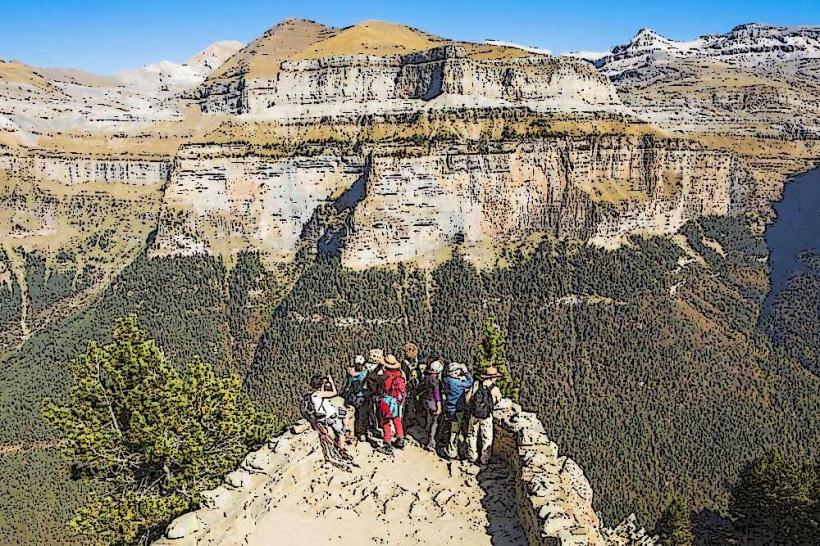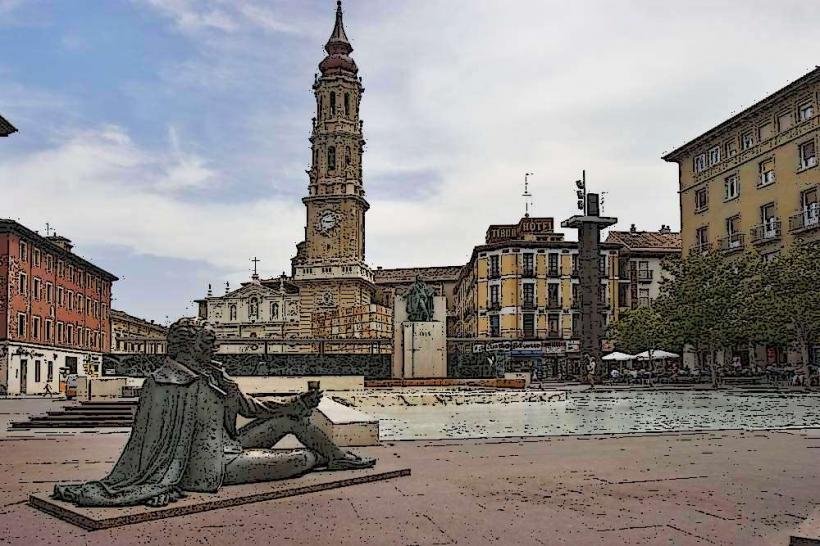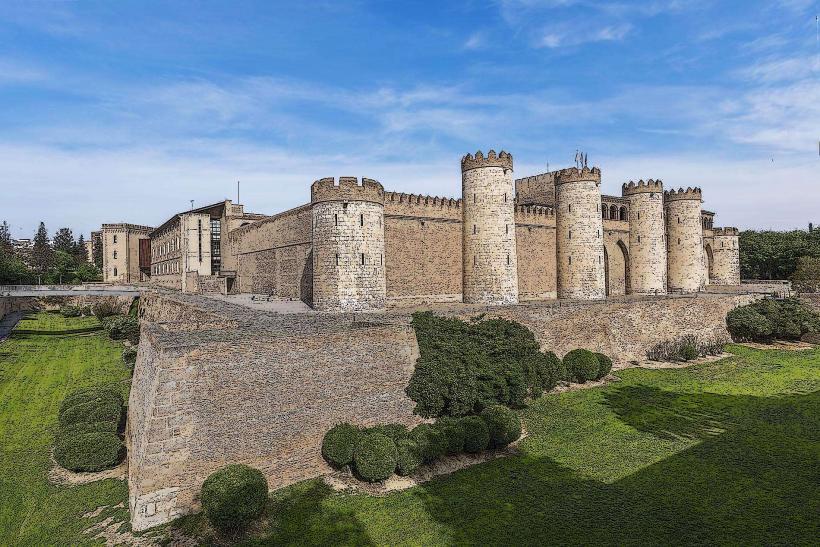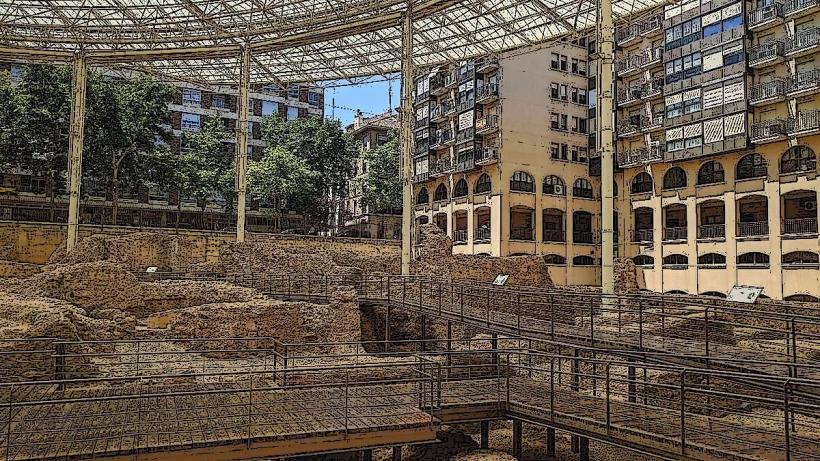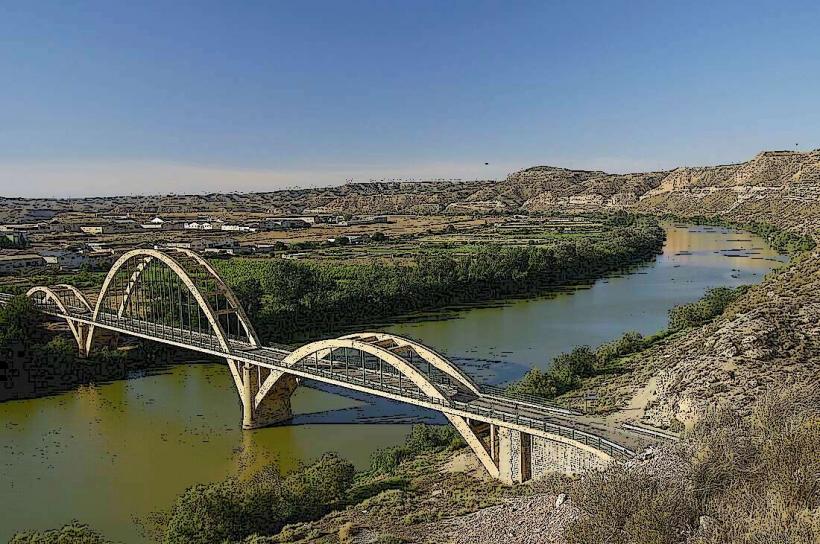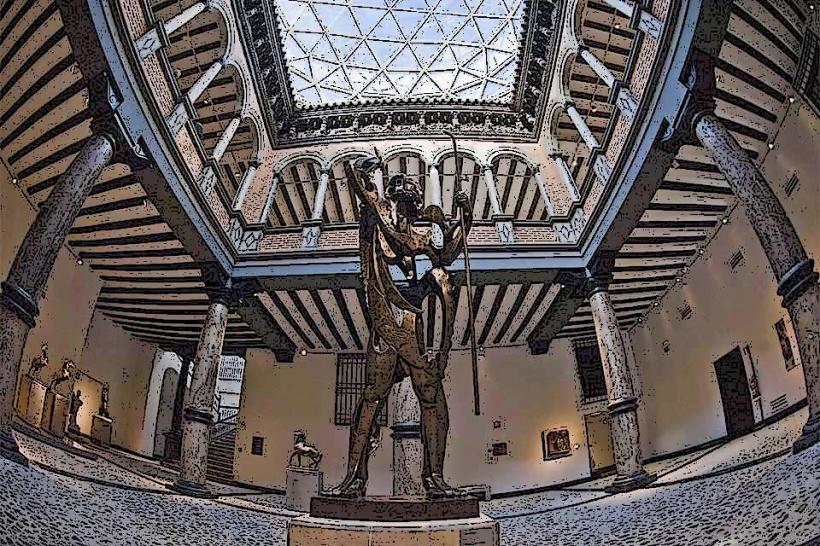Information
Landmark: Basilica del PilarCity: Zaragoza
Country: Spain
Continent: Europe
The Basilica del Pilar is one of Spain's most famous and significant religious landmarks, located in Zaragoza, along the banks of the Ebro River. It is a Baroque-style basilica and is dedicated to the Virgin Mary, specifically to Our Lady of the Pillar (Nuestra Señora del Pilar), who is the patroness of Zaragoza and of Spain.
Historical Background
The origins of the Basilica del Pilar date back to ancient times, with the first references to a Christian shrine on the site going as far back as the 1st century. According to tradition, the Virgin Mary appeared to the Apostle Saint James (Santiago) on this very spot while he was in Zaragoza, in around 40 CE, and instructed him to build a church in her honor. The story goes that Mary gave him a pillar (pilar), which is said to have been preserved as a sacred relic.
The basilica as we know it today was built over several centuries, starting in the 17th century, although there were earlier churches on the site. The Baroque basilica was constructed between 1681 and 1872, and its design incorporates both Renaissance and Baroque elements.
Architecture and Design
The Basilica del Pilar is a remarkable example of Baroque architecture, with stunning facades, intricate frescoes, and a grand dome. It combines a variety of architectural styles, reflecting the long history of its construction.
1. Exterior
- The basilica is known for its grand façade, which features a combination of stone and brick. The facade is dominated by twin towers that rise high above the city, providing a striking silhouette against the skyline of Zaragoza.
- The towers are capped with mosaic-covered domes, giving the basilica a distinctive look. The design is attributed to Francisco de Herrera the Younger and José Martínez de Arce.
- At the front of the basilica, you can find a statue of the Virgin Mary, which is part of the pilgrimage tradition. Visitors often bring flowers to place at the feet of the Virgin, as part of the annual Fiestas del Pilar celebrations.
2. Interior
- The interior of the Basilica del Pilar is equally stunning, with its spacious nave and impressive altar. The central altar is dedicated to Our Lady of the Pillar, with a beautiful statue of the Virgin housed in a silver and gold shrine.
- The dome is one of the basilica's most iconic features, and it is adorned with stunning frescoes painted by Francisco de Goya, one of Spain’s most famous artists. These murals, particularly those in the dome, depict scenes from religious and biblical stories.
- The interior also features several chapels and altars, each with its own religious significance and elaborate decorations. The basilica has a neoclassical style as well, particularly evident in the altar and the main nave.
3. The Pillar (El Pilar)
- The pillar itself, the object of devotion, is located in the main chapel of the basilica. It is believed to be the column that the Virgin Mary sat upon when she appeared to Saint James. The pillar is encased in a silver shrine, and many visitors come to venerate it as a symbol of faith and miracles.
Religious and Cultural Significance
The Basilica del Pilar holds immense religious importance, not only for the people of Zaragoza but also for Catholics worldwide. It is considered one of the most important pilgrimage sites in Spain, especially during the annual Fiestas del Pilar, which take place in October. The celebration, dedicated to the Virgin of the Pillar, includes processions, fireworks, and traditional Spanish dances, drawing thousands of visitors each year.
In addition to its religious significance, the basilica is an important cultural and artistic treasure. Its Baroque architecture and works of art by renowned artists like Goya make it a key highlight for anyone visiting Zaragoza. The Basilica del Pilar is also a symbol of the city, representing its rich religious heritage, artistic traditions, and historical continuity.
Visiting the Basilica del Pilar
- Location: The basilica is centrally located in Zaragoza, on the Plaza del Pilar, making it easy to access for visitors. The Ebro River flows beside it, offering beautiful views of the basilica and its surroundings.
- Opening Hours: The basilica is generally open to visitors throughout the day. However, it’s best to check specific visiting hours, as they may vary, especially during religious services or events.
- Admission: Entry to the basilica is usually free. However, certain areas, such as the museum or the bell tower, may require a small entrance fee.
- Accessibility: The basilica is easily accessible for people with mobility issues, with ramps and lifts available for most areas.
Conclusion
The Basilica del Pilar is one of Spain's most remarkable religious and architectural landmarks. With its stunning Baroque design, beautiful interior frescoes, and deep religious significance, it stands as a testament to the spiritual heritage of Zaragoza and Spain. Whether you're visiting for religious reasons, to admire the art, or to experience the city's culture, the Basilica del Pilar is a must-see destination that beautifully represents both the history and the devotion of the Spanish people.

